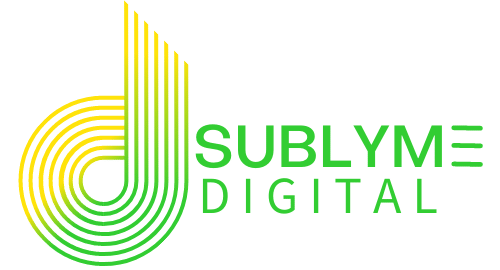
Author: Graham Davidson
Graham Davidson is the Owner and Chief Marketing Guru of Sublyme Digital, leading the agency’s remote-first approach to deliver impactful web design, SEO, and digital growth strategies for businesses across North America.
Our Guide to Inclusions & Exclusions in AdWords
Why Brand Lists Are the Unsung Hero of PPC
Key Takeaways:
- Brand Lists are available exclusively within MAX Ai-enabled campaigns (Performance Max and AI Max for Search).
- Strategic use of Brand Lists for inclusions and exclusions provides unprecedented control over branded search traffic, campaign efficiency, and brand safety.
- Mastery of Brand Lists is essential for brand defense, competitor conquesting, compliance, and maximizing paid search ROI.
- Proper Brand List management requires ongoing review, cross-team collaboration, and alignment with business goals.
- For a deep dive into MAX Ai campaigns, see our AI Max for Search Campaigns: The Definitive 2025 Guide for Marketers.
What Are Brand Lists in Google AdWords?
AI Max for Search Campaigns: The Definitive 2025 Guide for Marketers.
The Strategic Value of Brand List Inclusions
Brand Lists are the digital moat and drawbridge of PPC—empowering businesses to defend their territory and expand their reach!

The Critical Role of Brand List Exclusions
- Budget Protection: Prevent spend on branded searches unlikely to convert or outside your competitive scope.
- Compliance and Reputation: Avoid legal risks or negative associations by excluding brands that could trigger compliance issues or harm your reputation.
- Strategic Focus: Concentrate your ad budget on high-value opportunities, rather than diluting spend across irrelevant or low-performing branded queries.
Building and Managing Brand Lists
Real-World Application: Elevating Campaign Performance with Brand Lists
FAQs:
Answer: Brand Lists are engineered for branded search queries and offer nuanced control in MAX Ai-enabled campaigns. Negative keywords block any term, but may not catch all brand-specific intent.
Answer: No. Brand Lists are only available in MAX Ai-enabled campaigns such as Performance Max and AI Max for Search.
Answer: Review your lists at least quarterly, or more frequently if your market or competitive landscape changes rapidly.
Answer: Yes, as long as your ads comply with Google’s policies and avoid misleading claims or trademark infringement.
Answer: Exclusion always takes precedence. If a brand appears on both lists, your ads will not show for those queries.
Success Stories
365 Data Centers
Discover how we rapidly rebuilt and optimized a 30-page website for 365 Data Centers, restoring their online presence and managing digital ad campaigns across key regions to drive engagement and growth.
XTECH Football Pads
Discover how we transformed XTECH Football Pads‘ digital presence, boosting their online sales and tripling website traffic through innovative website development and user experience enhancements.
BeEarth Foundation
Discover how we partnered with the BeEarth Foundation to develop a website that aligns with their mission of sustainability and global engagement. Our work has significantly increased their online visibility and engagement, supporting their efforts to promote sustainable development.
We Recycle Solar
Learn how we illuminated digital success for We Recycle Solar by completely redesigning their website to reflect their leadership in the growing solar recycling industry and implementing strategic digital advertising campaigns that enhanced their visibility at key industry events.
Preferred Home Health Care & Nursing Services
Explore how we elevated the digital presence of Preferred Home Health Care & Nursing Services by enhancing their website for better lead generation, building a dedicated site for staff recognition, and optimizing SEO for their location pages.
What Our Clients Say: Elevating Online Success
We Build Cool
Advanced Tactics: Beyond the Basics
For businesses ready to go further, Brand Lists can be integrated into advanced strategies. During seasonal promotions or product launches, you might temporarily include brands associated with complementary products, capturing users in the research phase. Conversely, a PR incident might prompt the temporary exclusion of certain brands to protect your own reputation.
Conclusion
Let's Build Something Sublyme
Sublyme Digital’s PPC experts are here to help you build, optimize, and govern Brand Lists that drive real results. Contact us now for a free Brand List strategy session and campaign audit.



